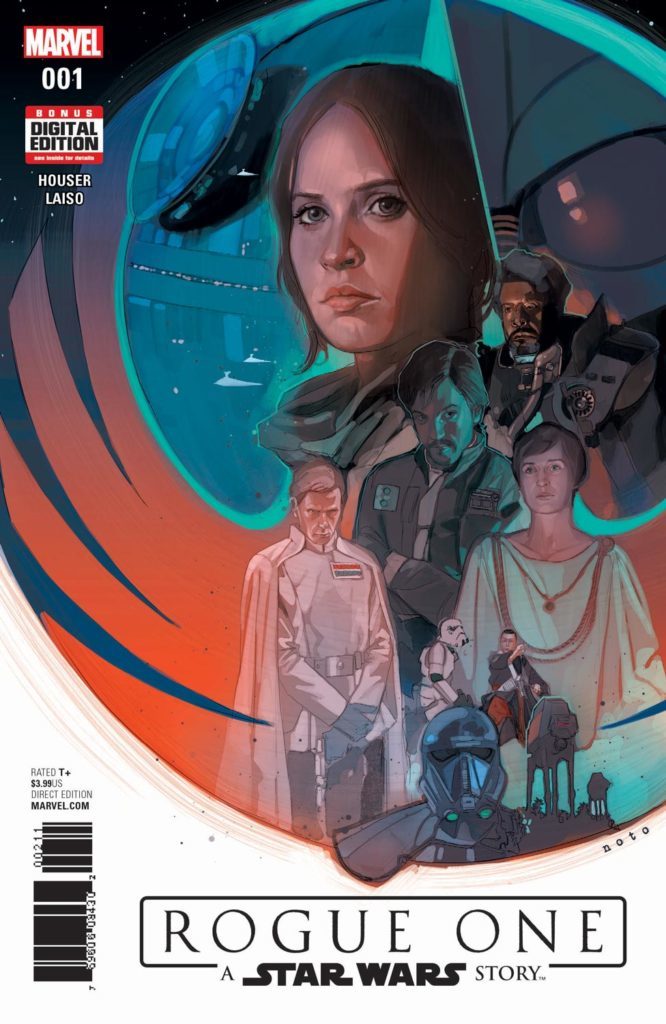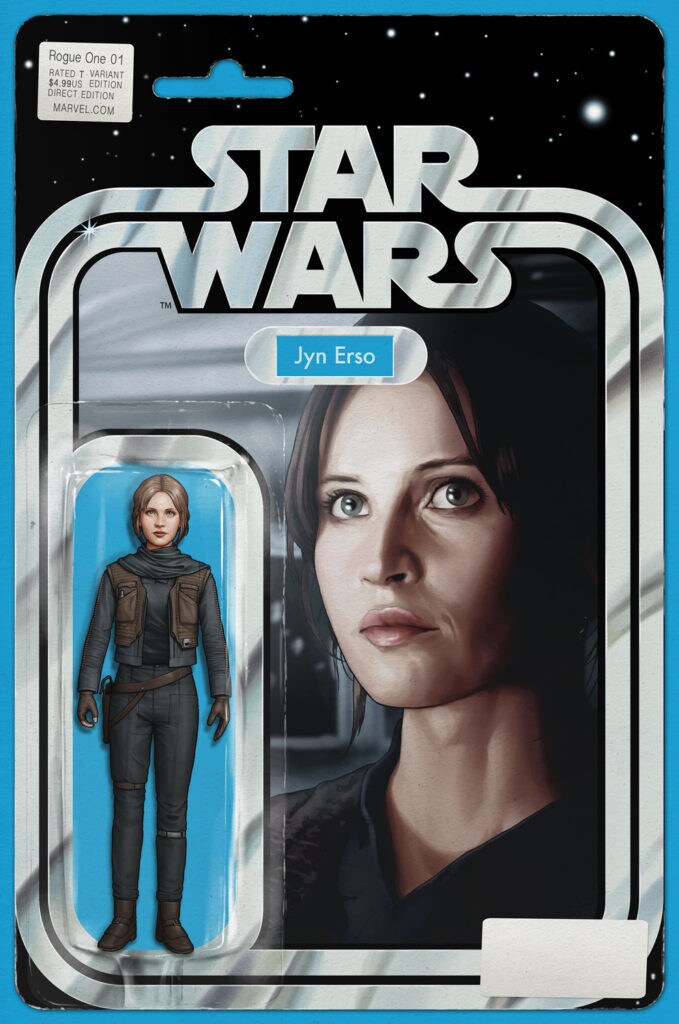StarWars.com gets all the intel on Marvel's upcoming adaptation, including a first look at the cover for issue #2.
The time-honored tradition of Star Wars being adapted into comic book form is continuing this April with Rogue One: A Star Wars Story. The six-issue limited series will be written by Jody Houser and feature art from Emilio Laiso, and it promises a little something extra: Houser will be including additional scenes from the novelization and elements not in the final film, which means more of our new favorite heroes and villains. StarWars.com emailed with Houser about writing the eagerly awaited adaptation, the promise of additional scenes, and which pieces of Star Wars storytelling made her a huge fan. (Plus, thanks to our rebel spies, we have a first look at the cover of issue #2.)
StarWars.com: When did you find out you would be writing the adaptation of Rogue One, and how did that impact your first viewing of the film?
Jody Houser: I was offered the job before Halloween, so the movie was pretty much always in the workbox for me. I read the script more than a week before the film hit theaters, so when I saw it opening night with a group of friends (85 friends, actually!) I was in writer mode the whole time.
StarWars.com: What is the process of adapting a feature film to the world of comic books, and what does the medium do to enhance the storytelling process?
Jody Houser: The most important thing to me is to make sure the story I'm telling fits the medium, rather than trying to force the medium to bend to the story. For a comic like Rogue One, that means a lot of outlining, figuring out what goes in each issue, on each page, and how to streamline scenes to better fit the comic format. Not to mention figuring out the best way to incorporate new material.
StarWars.com: Let's look at Rogue One a bit more closely. What about the film resonates with you, and how does a Rogue One adaptation specifically lend itself to comics?
Jody Houser: For me, the characters and the choices they make in a grayer, grimmer time in the galaxy than we've seen in the movies so far makes Rogue One an intriguing addition to the Star Wars universe. It's not the Jedi and the Sith we see here for the most part, it's the normal men and women fighting to make a difference. With the comic adaptation, I'm hoping to dive deeper into the characters and what compels those choices.
StarWars.com: Rogue One features a number of new characters, each with a unique story to tell. Which character (or characters) do you find yourself gravitating towards, and how did that change (if at all) during the writing process?
Jody Houser: I didn't think I had a favorite character when I started writing, but Bodhi Rook has become a standout for me. He was the one who had the most to lose. More than any of the others, he shows us how to be brave.
StarWars.com: Jyn Erso leads the group of rebels who steal the Death Star plans from the planet Scarif. What makes her tick, and what does she mean for the Star Wars universe? Without her, Luke Skywalker's one-in-a-million shot may not have happened, but she's more than that for so many, both in the film, as well as with Star Wars fans.
Jody Houser: If Bodhi is the new convert, Jyn is the lapsed believer. She was hurt by both the Empire and the Rebellion in her childhood, so the events of the movie are very much about her learning just what's at stake for the entire galaxy and how to push past letting her old pain define her.
StarWars.com: Cassian Andor is something of an enigma in Star Wars. For a hero, he sometimes employs unconventional means. How much of that is due to the setting of Rogue One, and what makes him an ideal foil for Jyn Erso?
Jody Houser: Cassian is the lifelong devout. Unlike Jyn, he never had reason to have a crisis of faith. The cause is his whole life, while she's pushed it out of hers. Cassian is a great look at how her life could have gone and a part of herself she needs to reclaim.
StarWars.com: It has also been revealed that a number of scenes from the novel, as well as lost moments from Lucasfilm and Gareth Edwards, will be included in the series. That must have been both a welcome, as well as a daunting challenge when writing the book. Can you give any hints as to what can readers expect to see in Rogue One?
Jody Houser: I don't want to spoil anything, but we'll definitely see some additional character moments that go a little deeper.
StarWars.com: Comics are an art form, as much as they are a beautiful blend of dialogue, plot, and character development. How do the talents of Emilio Laiso (who is handling the art for the adaptation of Rogue One) enhance your writing?
Jody Houser: Emilio is great at action scenes and setting/world building, so I look forward to seeing his take on the new planets and the big battles. In a comic like this, you definitely want a real cinematic feel to the art.
Exclusive reveal: The cover of Rogue One #2.
StarWars.com: What does Star Wars mean to you, both as a fan, as well as a creative, and what are some things you have taken from this experience?
Jody Houser: I loved the original trilogy as a kid, but it was the Timothy Zahn Expanded Universe novels and the books that followed that really made me a huge fan. Not surprisingly, since as a kid I was more into books than movies. More recently, I've been in a Star Wars RPG that's been running for almost four years. It introduced me to a group of new friends and got me back into gaming. I'm now part of a sci-fi RPG live stream show, so Star Wars was influencing my creative life even before the comic.
Dan Zehr is a high school English teacher with an MS in Teaching and Learning, and runs Coffee With Kenobi (with co-host Cory Clubb), a Star Wars podcast that analyzes the saga through critical thinking, analysis, interviews, and discussion. He is also the rebel teacher in the Target Rogue One commercial, and is an avid comic book consumer and longtime reader of the medium.



